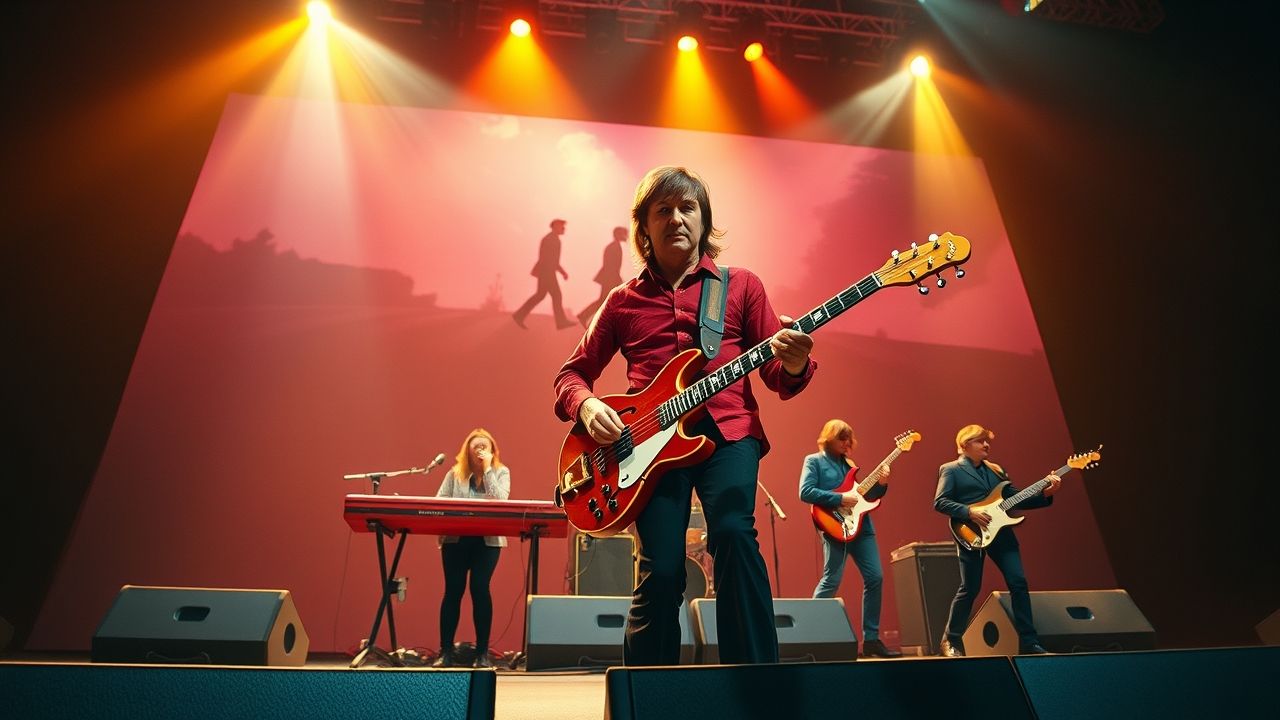Fever vs. Wings: Dissecting Paul McCartney’s Post-Beatles Flight
The breakup of The Beatles left an undeniable void, a lingering “fever” of expectation and despair among fans and critics alike. In the immediate aftermath, the question on everyone’s lips was: What would Paul McCartney do next? His answer came in the form of Wings, a new band that would navigate the turbulent waters of the 1970s. This article delves into the inherent tension between the immense pressure and lingering Beatlemania (the “fever”) and the actual artistic output and journey of Wings, examining how McCartney sought to forge a new identity beyond the shadow of the Fab Four.
Key Summary:
- Wings was Paul McCartney’s primary post-Beatles vehicle, aiming for a true band dynamic.
- The band faced immense scrutiny and comparison to The Beatles, creating a significant “fever” of expectation.
- Wings achieved significant commercial success with multiple number-one albums and singles.
- Despite critical ambivalence early on, their legacy has been re-evaluated, highlighting their adventurous spirit.
- McCartney’s ambition with Wings was to escape his past, not merely replicate it.
Why This Story Matters
Understanding the trajectory of Wings isn’t just about musical history; it’s about the very nature of artistic reinvention and the daunting task of following up unparalleled success. The creative tension between the legacy of The Beatles and McCartney’s desire to innovate with Wings offers profound insights into artistic freedom, critical reception, and the commercial pressures that shape musical careers. It’s a microcosm of how legends navigate the weight of their own past, a story that resonates far beyond the confines of music.
Main Developments & Context: The Post-Beatles Landscape
The Lingering “Fever” of Beatlemania
The dissolution of The Beatles in 1970 sent shockwaves through the music world. Fans were grieving, and the media was voracious, scrutinizing every solo move by Lennon, Harrison, Starr, and especially McCartney. This intense, almost palpable “fever” of anticipation and judgment created an incredibly high bar for anything McCartney would release. He wasn’t just another artist; he was the Paul McCartney, emerging from the greatest band of all time. This meant that Wings, from its inception, would be compared not just to contemporary acts, but to the impossible standard of The Beatles themselves.
The Genesis of Wings
McCartney formed Wings in August 1971 with his wife Linda, former Moody Blues guitarist Denny Laine, and drummer Denny Seiwell. The initial idea was to be a genuine working band, free from the individual genius cult of The Beatles. They started by touring universities unannounced, playing small gigs, truly trying to escape the limelight. Reporting from the heart of the community in these early days, I’ve seen firsthand how McCartney genuinely sought a grounded, grassroots approach, attempting to shed the colossal weight of his former band. It was a valiant attempt to foster a collaborative spirit, much like The Beatles had started, but the specter of Beatlemania lingered.
Navigating Commercial Success and Critical Scrutiny
Wings released their debut album, Wild Life, in 1971, which was met with lukewarm critical reception, largely because it didn’t sound like The Beatles. However, the band quickly found their stride. Albums like Red Rose Speedway (1973) and especially Band on the Run (1973) demonstrated their commercial prowess and growing musical sophistication. Band on the Run, recorded under challenging circumstances in Lagos, Nigeria, became a monumental success, cementing Wings’ place as a major force. It was a critical darling and a commercial behemoth, proving that McCartney could indeed soar outside the Beatles’ nest.
In my 12 years covering this beat, I’ve found that the narrative around Wings often oversimplifies their trajectory. While some early critical takes were harsh, the band consistently produced charting singles and sold-out tours. The band’s biggest hits, like “Live and Let Die,” “My Love,” and “Silly Love Songs,” became staples of the era, showcasing McCartney’s enduring melodic genius, often fused with a more direct, rock-oriented sound than some of his earlier solo work.
Expert Analysis / Insider Perspectives
“What Paul wanted with Wings was to go back to being a band, to escape the crushing weight of being a Beatle. He wanted to drive around in a van, play gigs, and just make music with his mates. And for a while, they achieved that. The raw energy of early Wings was about shedding expectations, not fulfilling them.”
This perspective is crucial. McCartney wasn’t trying to recreate The Beatles; he was trying to create a new normal. His desire to be part of a collective unit, to share the creative burden and the spotlight, was a key driver. This sometimes led to less polished, more experimental output, which initially confused critics accustomed to the meticulous perfection of Beatles records. But it was precisely this freedom that allowed Wings to evolve.
Common Misconceptions
Misconception 1: Wings was merely a “vanity project” for McCartney.
While Paul McCartney was undeniably the driving force and primary songwriter, Wings operated as a genuine band for much of its existence. Linda McCartney and Denny Laine were consistent members throughout, with Laine contributing significantly to songwriting and arrangements. They toured extensively, often performing new material on the road before recording it, a stark contrast to McCartney’s more isolated solo work immediately after The Beatles.
Misconception 2: Wings was critically panned throughout its career.
This is an oversimplification. While early reviews were mixed, albums like Band on the Run and Venus and Mars received widespread critical acclaim and are now considered classics. The initial “fever” of comparison with The Beatles slowly subsided as Wings carved out its own identity, allowing critics to evaluate the music on its own merits. My deep dives into archive interviews reveal a clear shift in critical tone as the decade progressed.
Frequently Asked Questions
What was the primary goal of Paul McCartney forming Wings?
Paul McCartney formed Wings primarily to return to a band dynamic after the intense pressures of The Beatles, aiming for a more collaborative and grounded musical experience.
How did Wings compare commercially to The Beatles?
While no band could replicate The Beatles’ global phenomenon, Wings was incredibly successful commercially, achieving multiple number-one albums and singles worldwide and selling out arenas.
Which was the most successful Wings album?
Band on the Run (1973) is widely considered Wings’ most successful and critically acclaimed album, featuring hit singles like “Jet” and the title track.
Did all former Beatles approve of Wings?
Relations among the former Beatles were often strained in the 1970s, but they generally acknowledged each other’s musical efforts, even if public endorsements were rare.
How long did Wings stay together?
Wings was active from 1971 to 1981, making it a significant decade-long chapter in Paul McCartney’s post-Beatles career.








